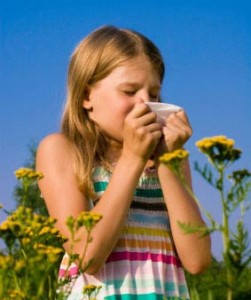
More evidence that low-calorie sweeteners are bad for your health
Studies show that artificial sweeteners can raise the risk of hypertension, metabolic syndrome, type 2 diabetes and heart disease, including stroke.

Natural Health News — Exposure to common antibacterial chemicals and preservatives found in soap, toothpaste, mouthwash and other personal-care products may make children more prone to a wide range of food and environmental allergies, according to new research.
Using existing data from a national health survey of 860 children aged 6 to 18, researchers at Johns Hopkins Children’s Center examined the relationship between urinary levels of antibacterials and preservatives found in many personal-hygiene products and the presence of IgE antibodies in the child’s blood.
IgE antibodies are immune chemicals that rise in response to an allergen and are markedly elevated in people with allergies.
“We saw a link between level of exposure, measured by the amount of antimicrobial agents in the urine, and allergy risk, indicated by circulating antibodies to specific allergens,” said lead investigator Jessica Savage, an allergy and immunology fellow at Hopkins.
Triclosan and parabens – the allergy link
In the study published the Journal of Allergy and Clinical Immunology the research team initially focussed on seven ingredients previously shown to disrupt endocrine function in lab and animal studies.
These compounds were bisphenol A, triclosan, benzophenone-3 and propyl, methyl, butyl and ethyl parabens, preservatives found in personal-hygiene products and some foods and medications.
Interestingly, triclosan and propyl and butyl parabens, all of which have antimicrobial properties, were the only ones associated with increased allergy risk in the current study, the researchers noted.
In the study, those with the highest urine levels of triclosan – an antibacterial agent used in soaps, mouthwash and toothpaste – had the highest levels of food IgE antibodies, and therefore the highest allergy risk, compared with children with the lowest triclosan levels.
Those with the highest urine levels of triclosan had nearly twice the risk of environmental allergies as children with the lowest urinary concentrations.
Children with the highest urinary levels of parabens – preservatives with antimicrobial properties used in cosmetics, food and medications – were more likely to have detectable levels of IgE antibodies to environmental allergens like pollen and pet dander, compared with those with low paraben levels.
Those with highest levels of propylparaben in the urine had twice the risk of an environmental allergy.
Food allergy risk was more than twice as pronounced in children with the highest levels of urinary triclosan as in children with the lowest triclosan levels. High paraben levels in the urine were not linked to food allergy risk.
Support for the hygiene hypothesis
The investigators say their findings are also consistent with hygiene hypothesis, which doctors increasingly believe is a possible explanation behind the growing rates of food and environmental allergies in the developed world.
The hypothesis suggests that early childhood exposure to common pathogens is essential in building healthy immune responses. Lack of such exposure can lead to an overactive immune system that misfires against harmless substances such as food proteins, pollen or pet dander.
It’s not clear that antibacterials and preservatives studied actually cause the allergies, say the scientists, but it is likely that they that these agents play a role in how the immune system develops.
Dr Savage adds: “The link between allergy risk and antimicrobial exposure suggests that these agents may disrupt the delicate balance between beneficial and bad bacteria in the body and lead to immune system dysregulation, which in turn raises the risk of allergies.”

Please subscribe me to your newsletter mailing list. I have read the
privacy statement